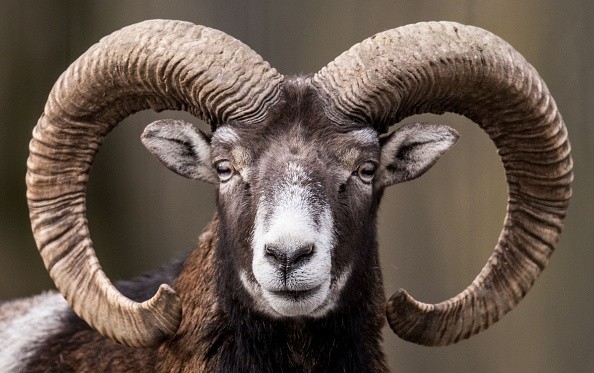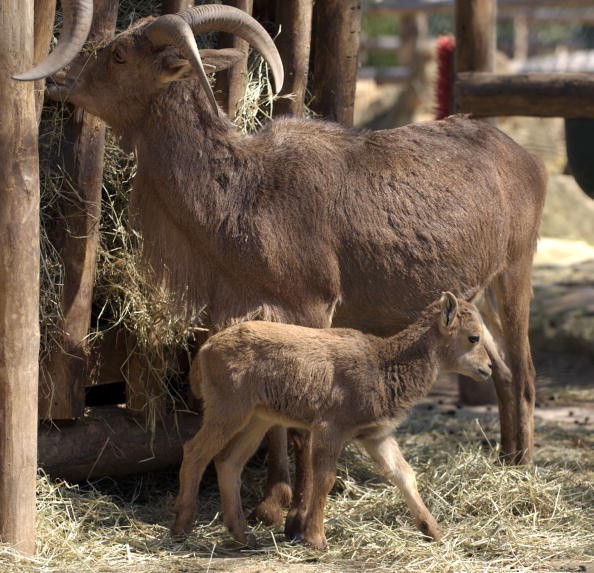Curly-horned wild sheep discovered in a long-abandoned 'dead zone' in Cyprus gives hope for both wildlife and the healing of ethnic conflicts.

Species Flourishing at Cyprus Dead Zone
Inter-communal violence in Cyprus in the 1960s divided the Mediterranean island in two, creating a deserted land where the mouflon breed thrives, as per Phys.org.
In the village of Varisha, about 35 miles west of Nicosia, Gucel spotted an orchid growing among the ruins of a farmhouse. After a Greek-sponsored military coup in 1974, Turkish forces controlled the northern section of the island, resulting in the island's current division.
At 180 kilometers (112 miles) in length and up to eight kilometers (five miles) width, the buffer zone protects a sliver of the island's land.
Bullet-riddled structures fall to the ground in what locals call "the dead zone," a somber reminder of a long-frozen conflict. United Nations peacekeepers patrol the border, keeping an eye out for traffickers and refugees, as well as the military.
Ecologist Iris Charalambidou from the University of Nicosia says it's a "wildlife corridor" that connects previously dispersed ecosystems all across the island, making it a "haven" for uncommon plants and animals.
Also Read : Sheep Save Sweat by Cooling Their Brains
The Safest Habitat for Animals
There are around 200 to 300 mouflons in the Variseia area alone, which is hardly a tenth of the projected 3,000 mouflon population, Charalambidou stated. Biodiversity thrives in these places, with 'core populations' of species that disseminate to other locations as their numbers increase.
According to News Concerns, an overgrown olive grove is home to a pair of mouflon, which are wary of the few human visitors, and flee as soon as wildlife experts and Argentinian peacekeeping forces get too close.
It's not just the mouflon that was nearly exterminated that is thriving in this area. According to Charalambidou, other threatened species include orchids and unique reptiles and endangered animals like the Cyprus spiny mouse thrives.
There is hope for a besieged environment, according to the experts. Charalambidou, a Greek Cypriot from the government-controlled south of the island, remarked that nature heals when human activity is not so concentrated in a given location.
In spite of their differences in political ideology, the island's shared nature has helped foster collaboration between the two sides. The island's political climate is still extremely challenging, Spokesman for the UN peacekeeping operation in Cyprus Aleem Siddique said.

Efforts to Identify Biodiversity Hotspots
UN-backed efforts to identify "biodiversity hotspots" in the buffer zone have brought scientists from both groups together.
Charalambidou looked at the yellow flowers poking through the rusting barbed wire and said, "We share a common goal and a common interest."
It seems as if the two islands' populations are gradually moving in opposite directions, with few opportunities for cross-cultural exchange.
When the two communities work together, they will be able to meet more frequently to discuss common concerns, which will benefit both the environment and the peace process, in addition to bringing them closer together.
It's impossible to ignore the country's turbulent past in Cyprus. Soldiers in fortified watchtowers on the hilltops above Variseia keep an eye on each other across the valley.
"People who work in environmental issues are usually so passionate about it that when they meet, they talk about that, and don't bother talking about other issues," Charalambidou said. "It unites people."
Related Article : Australian Farmer Herds Sheep Into Giant Heart Formation to Celebrate Love for Dead Aunt
For more news, updates about sheeps and similar topics don't forget to follow Nature World News!
© 2025 NatureWorldNews.com All rights reserved. Do not reproduce without permission.





